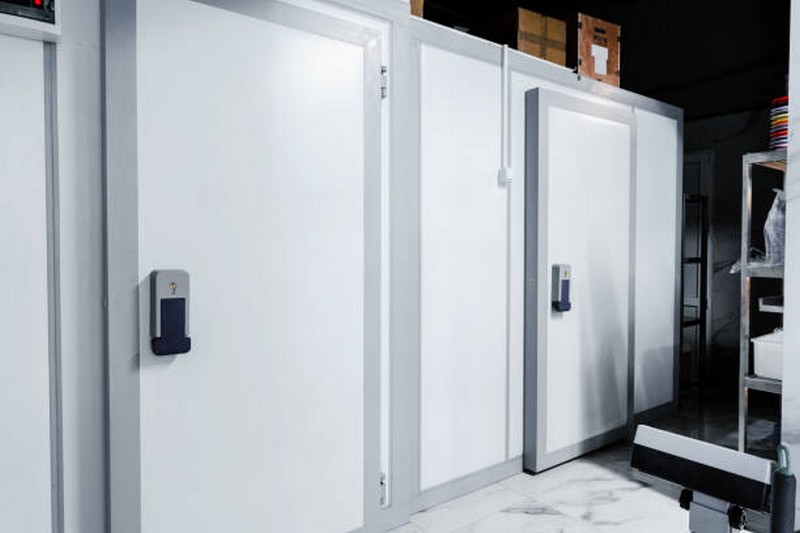When building a cold room, precise planning is essential for success. Understanding the major parameters that determine project outcomes is critical, whether for commercial refrigeration, pharmaceutical storage, or food preservation. Below we will explain the top ten elements to bear in mind when designing an assembly cold room, assuring functionality, efficiency, and durability.
1. Define Your Purpose
Before diving into the technical aspects, clearly define the purpose of your cold room. The intended use—be it for storing perishable food items, medical supplies, or floral products—will dictate many of your design choices, from size to temperature control requirements.
2. Size and Scalability
Consider the amount of space needed not only for current requirements but also for future growth. Scalability is key in cold room design, allowing for expansion or modification without significant downtime or disruption.
3. Temperature Requirements
Different products have varying optimal storage temperatures. Identifying the precise temperature range needed for your goods will influence the selection of refrigeration units, insulation materials, and monitoring systems.
4. Insulation and Materials
The choice of insulation and construction materials impacts the cold room’s efficiency and energy consumption. High-quality insulation reduces thermal bridging and ensures consistent temperatures, while materials resistant to moisture and cold are crucial for durability.
5. Location and Site Preparation
The physical location of your cold room affects its efficiency and operational costs. Consider factors like access to electricity, exposure to sunlight, and proximity to other operations. Proper site preparation, including flooring and ventilation, is also vital.
6. Energy Efficiency
Opt for energy-efficient solutions in every aspect of your cold room, from LED lighting to eco-friendly refrigerants. Energy efficiency not only reduces operational costs but also supports sustainability efforts.
7. Cooling Systems
Selecting the right cooling system is pivotal. Factors to consider include the system’s capacity, energy consumption, noise levels, and the ease of maintenance. Consulting with HVAC experts can provide insights into the most suitable options.
8. Ventilation and Airflow
Good ventilation and airflow prevent hot spots and ensure uniform temperature distribution. Strategic placement of fans and vents, along with a well-thought-out layout, can significantly enhance airflow efficiency.
9. Monitoring and Controls
Implementing advanced monitoring and control systems allows for real-time tracking of temperature and humidity levels. These systems can alert you to changes in conditions, enabling quick adjustments to prevent spoilage or damage.
10. Safety and Accessibility
Safety features, including emergency exits, anti-slip flooring, and adequate lighting, are non-negotiable in cold room design. Accessibility not only pertains to the ease of accessing stored items but also to the maintenance of the cold room components.
Delving Deeper into Planning
With these considerations in mind, let’s delve deeper into a few critical planning stages of your assembly cold room project:
Detailed Planning and Budgeting
After determining the basic requirements, draft a detailed plan that encompasses all aspects of the cold room assembly, including estimated costs. A comprehensive budget should account for initial construction expenses, as well as ongoing operational costs. This planning stage may involve consultations with industry experts to ensure accuracy and feasibility.
Regulatory Compliance
Ensure your cold room project complies with local regulations and industry standards. This includes building codes, health and safety regulations, and environmental guidelines. Compliance not only avoids legal issues but also ensures the safety and quality of your stored products.
Choosing the Right Partners
The success of your cold room project often hinges on the expertise of the professionals you partner with. From architects and engineers to HVAC specialists and cold room contractors, selecting experienced and reputable partners is crucial. Look for providers with a strong track record in cold room projects similar to yours.
Planning an assembly cold room project is a challenging yet rewarding job. By addressing these top ten concerns, you can build the groundwork for a facility that fits your unique requirements, complies to industry standards, and runs smoothly for years to come. Remember that rigorous planning, attention to detail, and cooperation with specialists are essential components of a successful cold room project. With these components in place, you can create a cold storage solution that improves your operations, protects the integrity of your goods, and adds to the overall success of your company.

